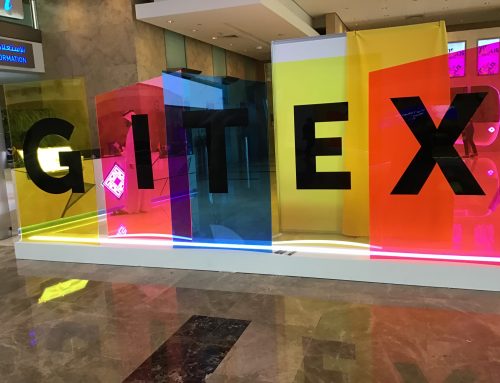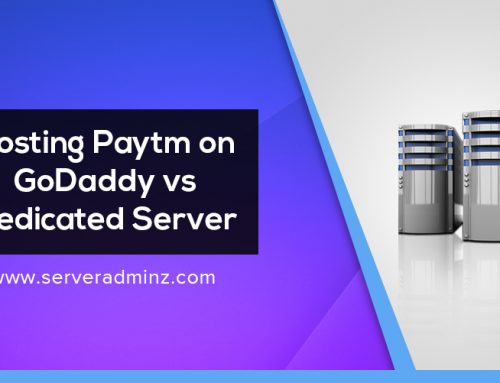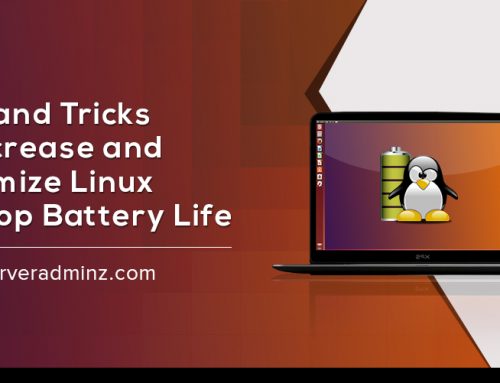Bonding is the process of combining 2 NICs on a system into a single device. For e.g., if you have 2 network cards on a machine, eth0 and eth1, you combine the same into a bond device, bond0 and then configure an IP for this bond device.
Why do we have to do that, you may ask. In the case that I mentioned, if I configure bond0 as 192.168.1.5, both eth0 and eth1 can send or receive packets that are meant for bond device IP(192.168.1.5). Its like you now have 2 paths to reach a destination. Bond devices can be configured in different modes which can be utilized to provide fault tolerance, greater performance or both, depending on the mode.
Bonding is talked about in greater detail in /usr/share/doc/kernel-doc-<kernel version>/Documentation/networking/bonding.txt.
As usual, all my experiments are on either Xen or VMWare guests and this one is no different. The below steps successfully worked for me on a RHEL 5.3 Xen guest. To start with, eth0 was configured as 192.168.122.118 while eth1 remained unassigned. I am about to create a bond device bond0 with eth0 and eth1, and assign this IP into it.
1. Add the below lines to /etc/modprobe.conf
alias bond0 bonding options bond0 mode=1 miimon=100
We are loading the bonding kernel module required to make this work, along with some options. mode=1 means that I have opted for active-backup setup. Here, only one slave in the bond device will be active at the moment. If the active slave goes down, the other slave becomes active and all traffic is then done via the newly active slave. If this sounds a bit confusing, just read on. Also, the value of miimon specifies how often MII link monitoring occurs. For a complete list of all the available arguments, feel free to check the kernel documentation.
2. Create bond0 device file, /etc/sysconfig/network-scripts/ifcfg-bond0 with the following content:
DEVICE=bond0 BOOTPROTO=none ONBOOT=yes NETWORK=192.168.122.0 NETMASK=255.255.255.0 IPADDR=192.168.122.118 USERCTL=no
The lines are self-explanatory, defining the device name and then specifying its IP address, netmask and all.
3. Create /etc/sysconfig/network-scripts/ifcfg-eth0 with content:
DEVICE=eth0 MASTER=bond0 SLAVE=yes USERCTL=no BOOTPROTO=dhcp IPV6INIT=yes IPV6_AUTOCONF=yes ONBOOT=yes
4. Create /etc/sysconfig/network-scripts/ifcfg-eth1 with content:
DEVICE=eth1 MASTER=bond0 SLAVE=yes USERCTL=no BOOTPROTO=dhcp IPV6INIT=yes IPV6_AUTOCONF=yes ONBOOT=yes
The important lines here to note are “MASTER=bond0“, and “SLAVE=yes” which tells that both eth0 and eth1 are now part of bond0 device.
5. Restart network and you are done!
[root@localhost ~]# service network restart Shutting down interface eth0: [ OK ] Shutting down loopback interface: [ OK ] Bringing up loopback interface: [ OK ] Bringing up interface bond0: [ OK ] [root@localhost ~]# ifconfig bond0 Link encap:Ethernet HWaddr 00:16:3E:1C:C5:A7 inet addr:192.168.122.118 Bcast:192.168.122.255 Mask:255.255.255.0 inet6 addr: fe80::216:3eff:fe1c:c5a7/64 Scope:Link UP BROADCAST RUNNING MASTER MULTICAST MTU:1500 Metric:1 RX packets:80 errors:0 dropped:0 overruns:0 frame:0 TX packets:54 errors:0 dropped:0 overruns:0 carrier:0 collisions:0 txqueuelen:0 RX bytes:11210 (10.9 KiB) TX bytes:11630 (11.3 KiB) eth0 Link encap:Ethernet HWaddr 00:16:3E:1C:C5:A7 UP BROADCAST RUNNING SLAVE MULTICAST MTU:1500 Metric:1 RX packets:45 errors:0 dropped:0 overruns:0 frame:0 TX packets:63 errors:0 dropped:0 overruns:0 carrier:0 collisions:0 txqueuelen:1000 RX bytes:3288 (3.2 KiB) TX bytes:13120 (12.8 KiB) eth1 Link encap:Ethernet HWaddr 00:16:3E:1C:C5:A7 UP BROADCAST RUNNING SLAVE MULTICAST MTU:1500 Metric:1 RX packets:42 errors:0 dropped:0 overruns:0 frame:0 TX packets:0 errors:0 dropped:0 overruns:0 carrier:0 collisions:0 txqueuelen:1000 RX bytes:8384 (8.1 KiB) TX bytes:0 (0.0 b) lo Link encap:Local Loopback inet addr:127.0.0.1 Mask:255.0.0.0 inet6 addr: ::1/128 Scope:Host UP LOOPBACK RUNNING MTU:16436 Metric:1 RX packets:10 errors:0 dropped:0 overruns:0 frame:0 TX packets:10 errors:0 dropped:0 overruns:0 carrier:0 collisions:0 txqueuelen:0 RX bytes:764 (764.0 b) TX bytes:764 (764.0 b)
As you can see from the output of ifconfig, device bond0 is listed as MASTER while devices eth0 and eth1 are listed as SLAVE. Also, the hardware address of bond0 and its underlying devices eth0 and eth1 are the same (00:16:3E:1C:C5:A7). In case you have multiple bond devices, comparing the hardware address of that bond device with the actual network device (ethX) will tell you whether it is a part of that particular bonding or not.
Now, the current status of the bond device bond0 is present in /proc/net/bonding/bond0. Time to fool around with bonding now… 🙂
[root@localhost ~]# cat /proc/net/bonding/bond0 Ethernet Channel Bonding Driver: v3.2.4 (January 28, 2008) Bonding Mode: fault-tolerance (active-backup) Primary Slave: None Currently Active Slave: eth0 MII Status: up MII Polling Interval (ms): 100 Up Delay (ms): 0 Down Delay (ms): 0 Slave Interface: eth0 MII Status: up Link Failure Count: 0 Permanent HW addr: 00:16:3e:1c:c5:a7 Slave Interface: eth1 MII Status: up Link Failure Count: 0 Permanent HW addr: 00:16:3e:58:02:c7
As I have highlighted above, the bonding mode is active-passive (since I used mode=1 to configure it in modprobe.conf). Also, both interfaces are up, but current active slave is eth0. Now, what happens when I down eth0? Normally when we down an interface, the IP associated with it also goes down (becomes unreachable). However, in bonding, it just switches over to next slave, eth1 – keeping the connection and the IP active:
[root@localhost ~]# ifdown eth0 [root@localhost ~]# cat /proc/net/bonding/bond0 Ethernet Channel Bonding Driver: v3.2.4 (January 28, 2008) Bonding Mode: fault-tolerance (active-backup) Primary Slave: None Currently Active Slave: eth1 MII Status: up MII Polling Interval (ms): 100 Up Delay (ms): 0 Down Delay (ms): 0 Slave Interface: eth1 MII Status: up Link Failure Count: 0 Permanent HW addr: 00:16:3e:58:02:c7 [root@localhost ~]# ifup eth0 [root@localhost ~]# cat /proc/net/bonding/bond0 Ethernet Channel Bonding Driver: v3.2.4 (January 28, 2008) Bonding Mode: fault-tolerance (active-backup) Primary Slave: None Currently Active Slave: eth1 MII Status: up MII Polling Interval (ms): 100 Up Delay (ms): 0 Down Delay (ms): 0 Slave Interface: eth1 MII Status: up Link Failure Count: 0 Permanent HW addr: 00:16:3e:58:02:c7 Slave Interface: eth0 MII Status: up Link Failure Count: 0 Permanent HW addr: 00:16:3e:1c:c5:a7
Notice that when I started eth0 again (ifup eth0), it got added to the bond device automatically. Also, in the above output, even though the permanent HW Address of eth0 and eth1 are different, they retain the HW address of the bond device in ifconfig output:
[root@localhost ~]# ifconfig bond0 Link encap:Ethernet HWaddr 00:16:3E:1C:C5:A7 inet addr:192.168.122.118 Bcast:192.168.122.255 Mask:255.255.255.0 inet6 addr: fe80::216:3eff:fe1c:c5a7/64 Scope:Link UP BROADCAST RUNNING MASTER MULTICAST MTU:1500 Metric:1 RX packets:87 errors:0 dropped:0 overruns:0 frame:0 TX packets:35 errors:0 dropped:0 overruns:0 carrier:0 collisions:0 txqueuelen:0 RX bytes:6340 (6.1 KiB) TX bytes:4950 (4.8 KiB) eth0 Link encap:Ethernet HWaddr 00:16:3E:1C:C5:A7 UP BROADCAST RUNNING SLAVE MULTICAST MTU:1500 Metric:1 RX packets:85 errors:0 dropped:0 overruns:0 frame:0 TX packets:44 errors:0 dropped:0 overruns:0 carrier:0 collisions:0 txqueuelen:1000 RX bytes:6360 (6.2 KiB) TX bytes:6424 (6.2 KiB) eth1 Link encap:Ethernet HWaddr 00:16:3E:1C:C5:A7 UP BROADCAST RUNNING SLAVE MULTICAST MTU:1500 Metric:1 RX packets:11 errors:0 dropped:0 overruns:0 frame:0 TX packets:0 errors:0 dropped:0 overruns:0 carrier:0 collisions:0 txqueuelen:1000 RX bytes:574 (574.0 b) TX bytes:0 (0.0 b) lo Link encap:Local Loopback inet addr:127.0.0.1 Mask:255.0.0.0 inet6 addr: ::1/128 Scope:Host UP LOOPBACK RUNNING MTU:16436 Metric:1 RX packets:10 errors:0 dropped:0 overruns:0 frame:0 TX packets:10 errors:0 dropped:0 overruns:0 carrier:0 collisions:0 txqueuelen:0 RX bytes:764 (764.0 b) TX bytes:764 (764.0 b)
That’s it..!! Happy bonding.. 🙂





Hi there,
Ugh, I liked! So clear and positively.
Great article. Came here for another one (about RHN’s location-aware settings) and jumped up to the home page.
Bonding works very well under linux. For a project a couple years ago, I needed to grab data off several gigabit taps, and with some quad cards in a rackmounted server was able to set up an single master interface with 12 gigabit slaves… I was impressed when it worked exactly as it should, first time.
Hi,
Good description!
There are some minor pieces of configuration that I do not get:
Why is the BOOTPROTO= parameter on the eth0 and eth1 interfaces configured as DHCP? And why do those interfaces have IPv6 config while that is not present on the BOND configuration?
Steven
@Steven, BOOTPROTO= on the eth0 and eth1 interfaces does not matter. AFAIK, parameters of the bond device will be used to configure it.
cool 🙂
thank you very much dr